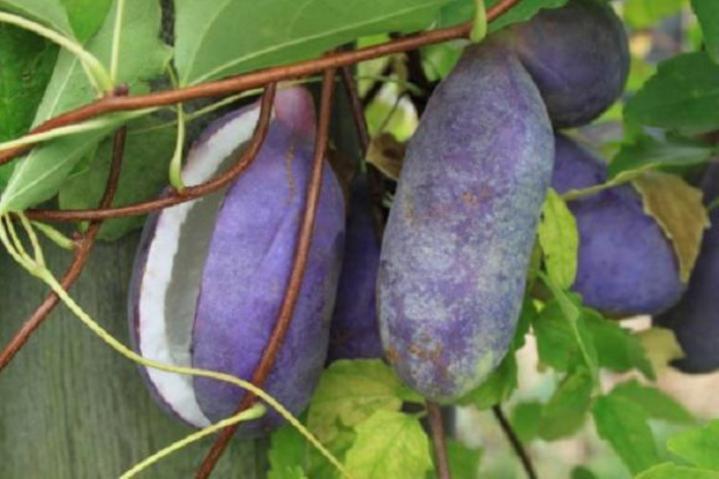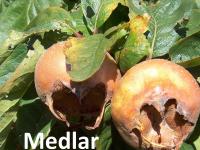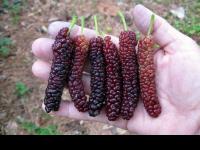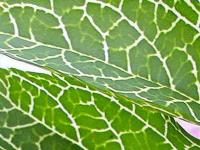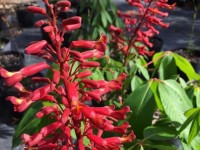Up for sale
one Akebia Quinata (aka Chocolate Vine) , rooted cutting/ starter plant
You will receive rotted cutting that starting to grow in container with soil, shipped in the box with tracking number within USA.
Akebia quinata is a deciduous Climber growing to 12 m (39ft 4in) at a fast rate.
It is hardy to zone (UK) 5 and is not frost tender. It is in flower from Apr to May, and the seeds ripen from Sep to October. The flowers are monoecious (individual flowers are either male or female, but both sexes can be found on the same plant)
USDA hardiness zone : 4-8
Suitable for: light (sandy), medium (loamy) and heavy (clay) soils and prefers well-drained soil. Suitable pH: acid, neutral and basic (alkaline) soils. It can grow in full shade (deep woodland) semi-shade (light woodland) or no shade. It prefers moist soil.
Edible Parts: Fruit; Leaves.
Edible Uses: Tea.
Fruit - raw. Sweet but insipid. The fruit has a delicate flavour and a soft, juicy texture. Lemon juice is sometimes added to the fruit to enhance the flavour. The bitter skin of the fruit is fried and eaten. The fruit is 5 - 10cm long and up to 4m wide. Soft young shoots are used in salads or pickled[183]. The leaves are used as a tea substitute.
Plants For A Future can not take any responsibility for any adverse effects from the use of plants. Always seek advice from a professional before using a plant medicinally.
The stems are anodyne, antifungal, antiphlogistic, bitter, diaphoretic, diuretic, emmenagogue, febrifuge, laxative, galactogogue, resolvent, stimulant, stomachic and vulnerary. Taken internally, it controls bacterial and fungal infections and is used in the treatment of urinary tract infections, lack of menstruation, to improve lactation etc. The stems are harvested in the autumn and dried for later use. The fruit is antirheumatic, depurative, diuretic, febrifuge, stomachic and tonic. It is a popular remedy for cancer. The root is febrifuge. The plant was ranked 13th in a survey of 250 potential antifertility plants in China
The peeled stems are very pliable and can be used in basket making. Plants have sometimes been used as a ground cover, but their method of growth does not really lend themselves to this use
Propagation:
Seed - best sown in a cold frame as soon as it is ripe. Surface sow in a light position. The seed usually germinates in 1 - 3 months at 15°c. Stored seed should be given 1 month cold stratification and can be very difficult to germinate. When large enough to handle, prick the seedlings out into individual pots and grow them on in light shade in the greenhouse for at least their first winter. Plant out in late spring or early summer, after the last expected frosts. Cuttings of half-ripe wood, July/August in a frame. The cuttings can be slow to root. Cuttings can also be taken of soft wood in spring. Root cuttings, December in a warm greenhouse. Layering in early spring. Very easy, the plants usually self-layer and so all you need to do is dig up the new plants and plant them out directly into their permanent positions.
Payment must be received within 3 days after the purchase, then I ship the item. Feel free to ask me any questions about this item. I am always glad to help you.
I prefer to ship at beginning of the week - Mondays or Wednesdays. Shipping first class mail with tracking number in USA. International buyers contact me first before you buy it , as I don't send to all countries due to their border plant entry control policies. I am not responsible for confiscated items due to quarantine inspection in your country. Akebia Quinata (aka Chocolate Vine) starter plant/ rooted cutting Tags: rare,plant,Akebia,australis,Vine,Chocolate,liana,Quinata
one Akebia Quinata (aka Chocolate Vine) , rooted cutting/ starter plant
You will receive rotted cutting that starting to grow in container with soil, shipped in the box with tracking number within USA.
Akebia quinata is a deciduous Climber growing to 12 m (39ft 4in) at a fast rate.
It is hardy to zone (UK) 5 and is not frost tender. It is in flower from Apr to May, and the seeds ripen from Sep to October. The flowers are monoecious (individual flowers are either male or female, but both sexes can be found on the same plant)
USDA hardiness zone : 4-8
Suitable for: light (sandy), medium (loamy) and heavy (clay) soils and prefers well-drained soil. Suitable pH: acid, neutral and basic (alkaline) soils. It can grow in full shade (deep woodland) semi-shade (light woodland) or no shade. It prefers moist soil.
Edible Parts: Fruit; Leaves.
Edible Uses: Tea.
Fruit - raw. Sweet but insipid. The fruit has a delicate flavour and a soft, juicy texture. Lemon juice is sometimes added to the fruit to enhance the flavour. The bitter skin of the fruit is fried and eaten. The fruit is 5 - 10cm long and up to 4m wide. Soft young shoots are used in salads or pickled[183]. The leaves are used as a tea substitute.
Plants For A Future can not take any responsibility for any adverse effects from the use of plants. Always seek advice from a professional before using a plant medicinally.
The stems are anodyne, antifungal, antiphlogistic, bitter, diaphoretic, diuretic, emmenagogue, febrifuge, laxative, galactogogue, resolvent, stimulant, stomachic and vulnerary. Taken internally, it controls bacterial and fungal infections and is used in the treatment of urinary tract infections, lack of menstruation, to improve lactation etc. The stems are harvested in the autumn and dried for later use. The fruit is antirheumatic, depurative, diuretic, febrifuge, stomachic and tonic. It is a popular remedy for cancer. The root is febrifuge. The plant was ranked 13th in a survey of 250 potential antifertility plants in China
The peeled stems are very pliable and can be used in basket making. Plants have sometimes been used as a ground cover, but their method of growth does not really lend themselves to this use
Propagation:
Seed - best sown in a cold frame as soon as it is ripe. Surface sow in a light position. The seed usually germinates in 1 - 3 months at 15°c. Stored seed should be given 1 month cold stratification and can be very difficult to germinate. When large enough to handle, prick the seedlings out into individual pots and grow them on in light shade in the greenhouse for at least their first winter. Plant out in late spring or early summer, after the last expected frosts. Cuttings of half-ripe wood, July/August in a frame. The cuttings can be slow to root. Cuttings can also be taken of soft wood in spring. Root cuttings, December in a warm greenhouse. Layering in early spring. Very easy, the plants usually self-layer and so all you need to do is dig up the new plants and plant them out directly into their permanent positions.
Payment must be received within 3 days after the purchase, then I ship the item. Feel free to ask me any questions about this item. I am always glad to help you.
I prefer to ship at beginning of the week - Mondays or Wednesdays. Shipping first class mail with tracking number in USA. International buyers contact me first before you buy it , as I don't send to all countries due to their border plant entry control policies. I am not responsible for confiscated items due to quarantine inspection in your country. Akebia Quinata (aka Chocolate Vine) starter plant/ rooted cutting Tags: rare,plant,Akebia,australis,Vine,Chocolate,liana,Quinata
03220
Payment Methods




Shipping
USPS, $8.60
Payment Policy
We do accept PayPal, personal checks, cash, money orders, Western Union and money-gram.
Shipping Policy
Shipping items right after received payment within 3-5 days.
Plants will be packed securely in the box, preventing it from shifting inside the box, with adequate moisture in the soil or around the roots in case of bare rooted plants during the dormancy.
Return/Exchange Policy
We guarantee plants and/or plant material will arrive alive and safe. If there is a damage to the plant during the shipping please contact us very same day of delivery with the pictures showing the damage so we can see it. We will do everything possible to correct it.
Please Login or Register first before asking a question.
